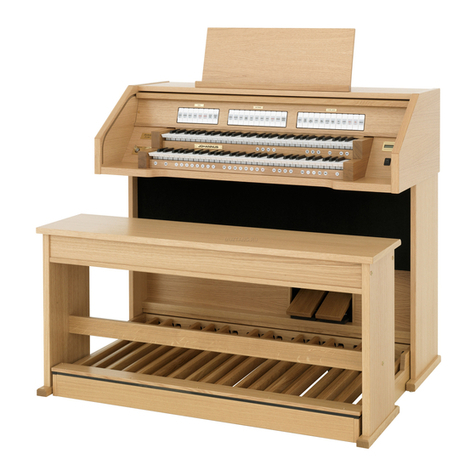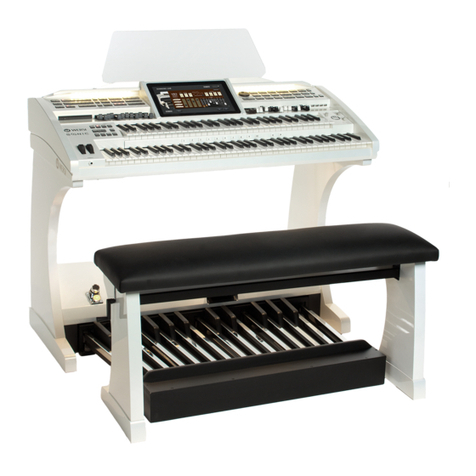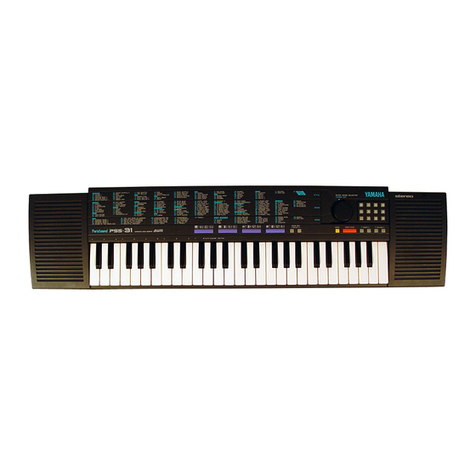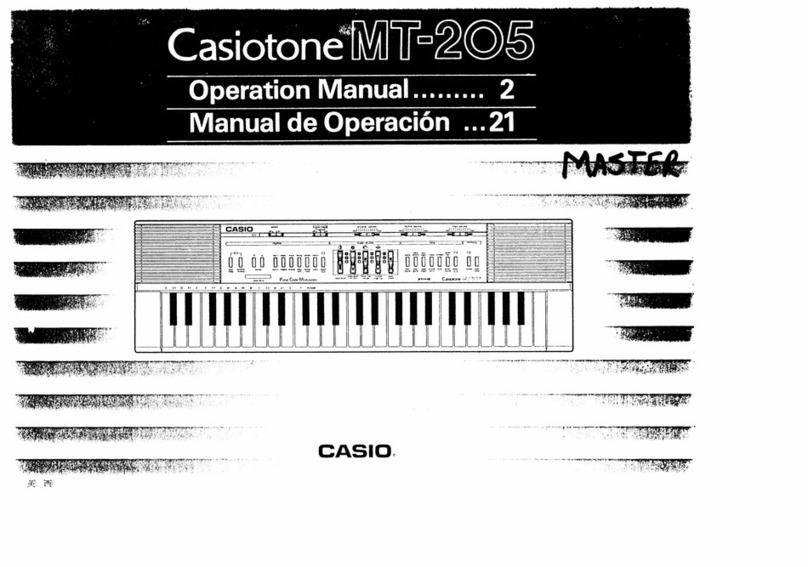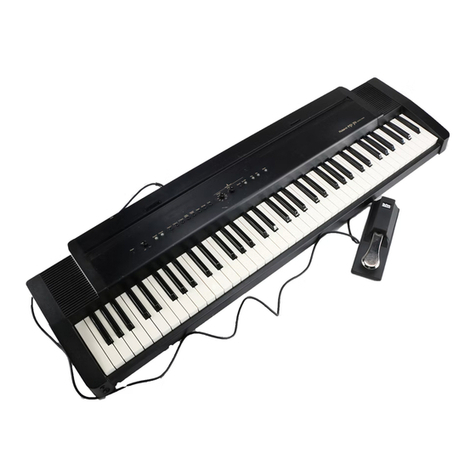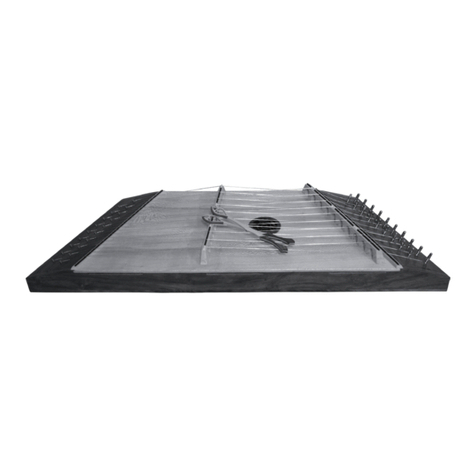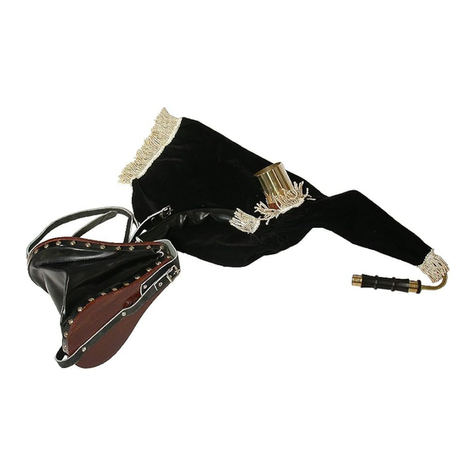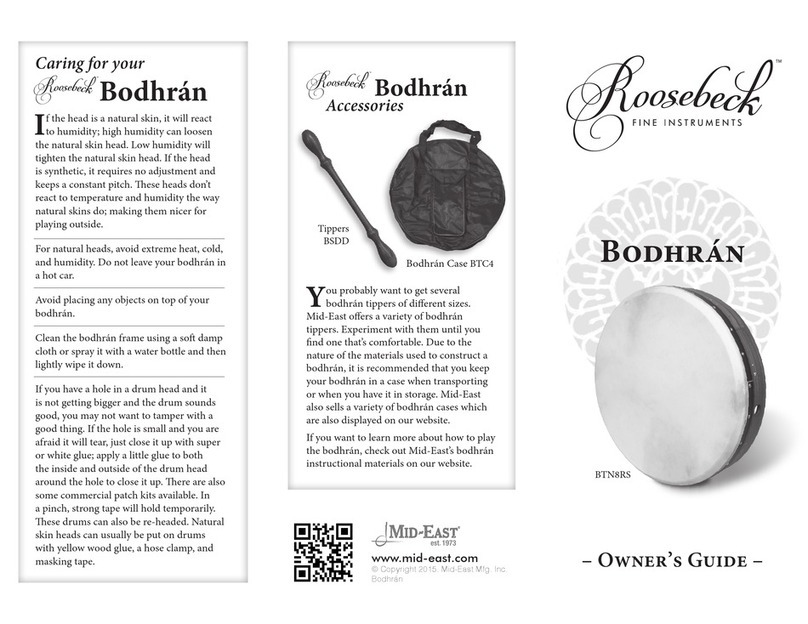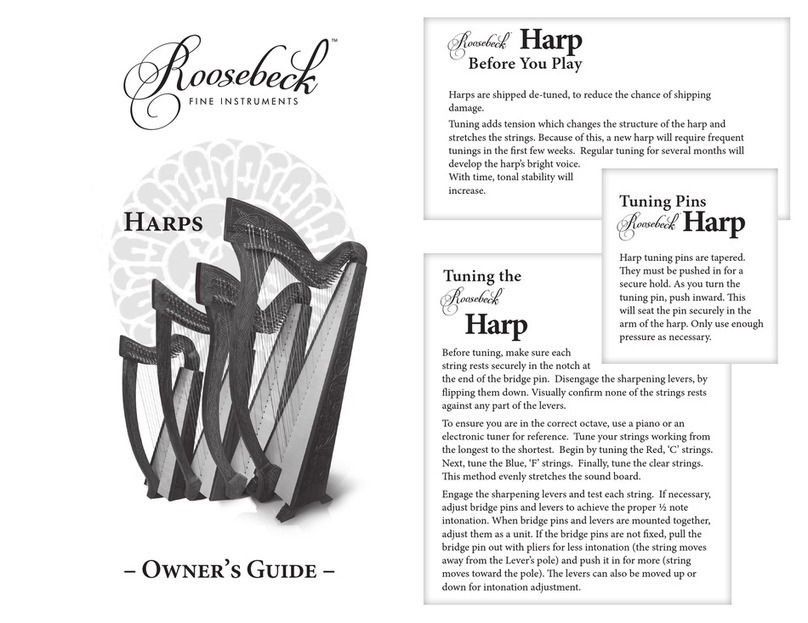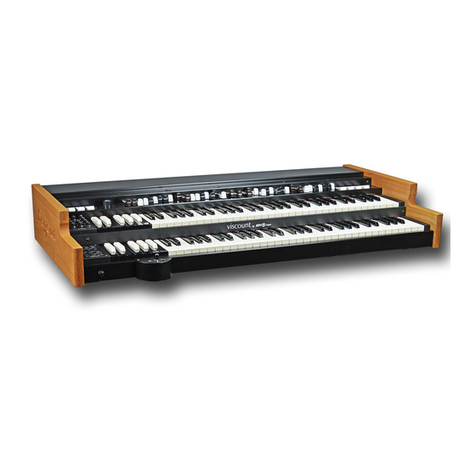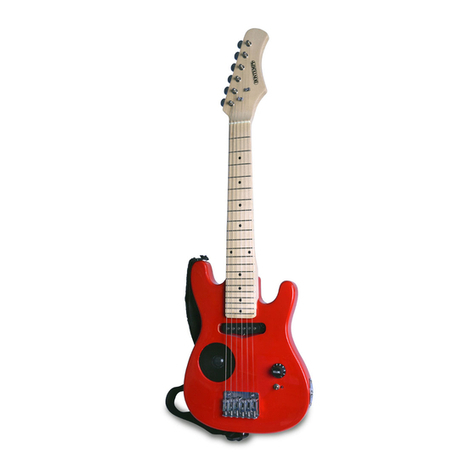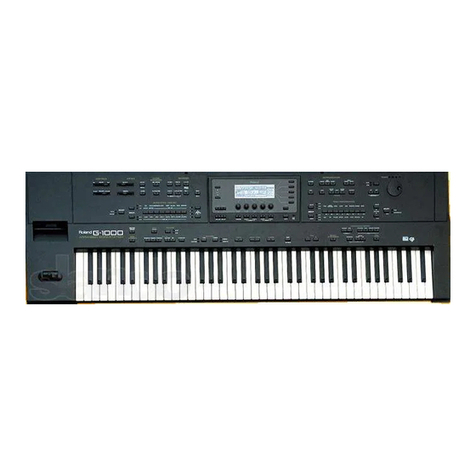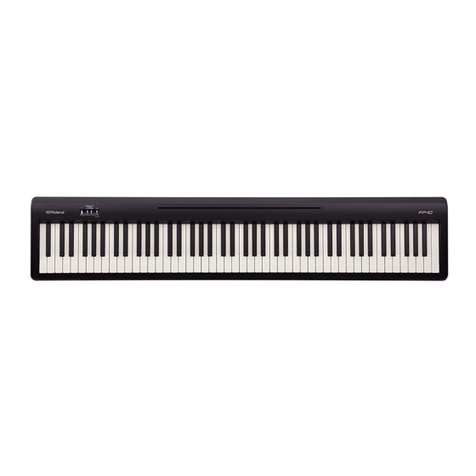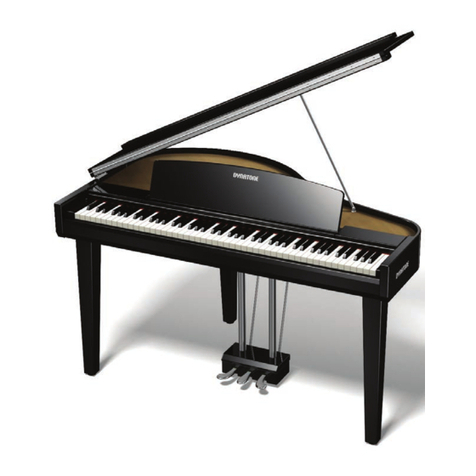
Our Prima Balalaika
measures approximately
27” in length with the
body having the classical
triangular shape. e
back is slightly bowed
and made with stave
construction in two
tones of rosewood.
e darker back
contrasts with the light
colored wood of the
soundboard. Familiarize
yourself with the
balalaika’s parts from
the diagram on the
right.
Before tuning, the proper bridge position must be located. First nd
the nut. e nut is the bar at the joint between the neck and the peg
box. Measure the distance from the nut to the 12th fret. Repeat this
distance from the 12th fret to the bridge location. e nut and the
bridge should be equal distance from the 12th fret. Position the bridge
at a right angle to the strings. e Balalaika strings are tuned above
middle C to: A, E, E (1st-3rd). e 1st string is the thinnest, and lays
over more frets than the 2nd & 3rd strings. Use a piano or electronic
tuner as a reference for tuning.
You may be most comfortable playing the balalaika while seated in a chair.
Hold the neck between the thumb and index nger of your le hand. Tuck
the body of the balalaika under your right arm and hold it close to your
chest. e corner of the instrument should rest between your knees. is is a
very similar position to playing the guitar.
Holding your
Balalaika
Playing your
Balalaika
ere are several methods of playing the
balalaika, with the most common being the
strum. Strumming is the playing method
used with most music. To play, the le
hand notes the strings while the thumb or
index nger of the right hand strums the strings. e soundboard of the
balalaika is a relatively so unnished wood. Strumming over the center
of the soundboard can disgure the soundboard. erefore the balalaika
is strummed high on the soundboard over the Pancer. e dark rosewood
Pancer on the soundboard is decorative but also protects the soundboard
from damage. With the balalaika correctly tuned, try playing some down
strokes with the eshy part of the right thumb. Be sure to stroke with your
entire forearm, not just your wrist. e thumb may be laid along the index
nger for stability. Rapid up and down strumming on long notes produces
the singing tone specic to this instrument.
e Tremolo consists of fast up-and down beats with the right hand index
nger. It can be used both to play on all strings or just one single string. e
beats must be of equal power, up and down. e tremolo can be interrupted
aer every note. e tremolo can also combine several notes.
With the Pizzicato, you use your right hand thumb to produce downward
beats and your right hand index nger to produce upward beats.
Le hand Pizzicato - you pluck the strings with your le hand.
ese methods are just brief descriptions of several balalaika playing
methods. For more in depth information and instruction on the balalaika,
we recommend you purchase one of the many instructional books and
videos available.
Balalaika
Tuning your
Balalaika
Before You Play Tuning Pegs
Nut
Peg Box
Soundboard
Bridge
End Pins
12th Fret
Neck
Pancer
